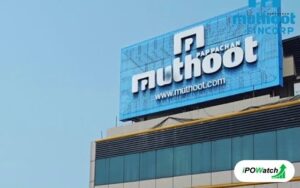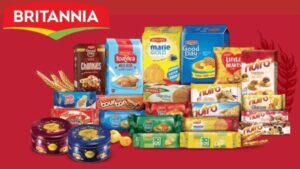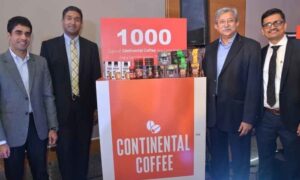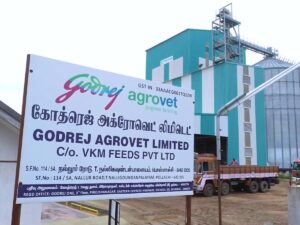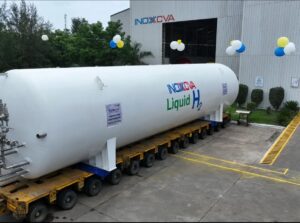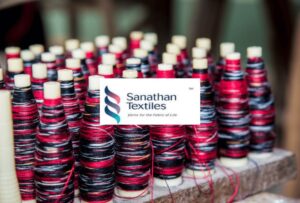1. At a Glance
Welcome to another episode ofChemicals Got Talent, featuringVinati Organics Ltd (VOL)— India’s not-so-humble specialty chemical diva who keeps giving Wall Street chemistry teachers a reason to smile and short sellers a reason to sweat. At ₹1,658 per share, with amarket cap of ₹17,187 crore, this Mahad–Lote based powerhouse just reportedQ2FY26results that prove one thing — consistency can also look glamorous.
Revenue came in at₹546 crore, barely changing quarter-on-quarter (-1.27%), but the profit party was loud —PAT up 21.6% QoQ to ₹129 crore, andOPM touched 33%, the highest in recent quarters. ROE is a steady 15.8%, and ROCE stands tall at 20.6%. The company remains debt-free, has a0.45% dividend yield, and runs on44% renewable energybecause apparently, green chemistry is not just for CSR brochures anymore.
Oh, and in classic corporate Bollywood style — the CFO just retired, a new one took charge, and Phase 1 of the much-hypedATBS expansion (10,000 TPA)officially kicked offtoday(November 5, 2025). All in a day’s work at the Vinati lab.
2. Introduction
If you ever doubted that chemistry could be sexy, you haven’t metVinati Organics. Born in 1989 (when Doordarshan ruled and chemical plants smelled of ambition), this company has aged better than most of its competitors’ balance sheets.
Vinati Organics doesn’t just make chemicals — it brews power potions for industries from pharma to polymers. While others are stuck in commodity quicksand, Vinati plays in the specialty segment where margins are juicy, molecules are complex, and competition is terrified.
It’s theworld’s largest producer of Iso Butyl Benzene (IBB)and2-Acrylamido-2-Methylpropane Sulfonic Acid (ATBS), holding over65% global market share. That’s right — two-thirds of the world’s shampoo thickeners and polymer stabilizers quietly come from a plant in Maharashtra.
In FY24, exports made up55%of revenues (down from 68% two years ago), while domestic business gained share at45%— a conscious de-risking move. The product mix is shifting too — ATBS and IBB now form 49% of the pie, compared to 63% in FY22, as the company expands into antioxidants and butyl phenols.
The ATBS expansion andVeeral Organicscapex of ₹500 crore are setting up the next leg of growth. Add 33 MW of solar capacity, and you get a company that’s not just clean on emissions but also on the balance sheet —zero debt, ₹2,960 crore reserves, and a CFO succession that looks smoother than most Bollywood hero replacements.
3. Business Model – WTF Do They Even Do?
In one line —Vinati Organics makes chemicals that make other chemicals better.
Sounds boring? Wait till you realize that these invisible molecules make your shampoo foam, your perfume last, your plastic not melt, and your rocket propellant behave. It’s a chemist’s version of god mode.
Their operations split into six spicy categories:
- Specialty Aromatics– Iso Butyl Benzene (IBB) and cousins like N-Butyl Benzene and SBB that end up in pharma and fragrance intermediates.
- Specialty Monomers– ATBS and its friends form the backbone of high-performance polymers.
- Butyl Phenols– Complex organic compounds used across resins and coatings.
- Antioxidants– TheVeenoxline (1010, 1076, 168) fights polymer aging — basically plastic’s anti-wrinkle cream.
- Miscellaneous Polymers– Vintreat, Vinplast, Vinflow — chemicals with names that sound like 90s video games but run critical industrial applications.
- Inorganic Chemicals– Like potassium bicarbonate, because who said Vinati doesn’t like a good food additive once in a while?
The business thrives onlong-term contractswith global giants likeBASF, Dow Europe, Mitsubishi, SNF, and Chemtall Inc.These guys don’t switch suppliers easily — Vinati’s consistency and backward integration
make it sticky.
So yes, it’s not flashy FMCG or fintech drama. It’s chemistry — profitable, patient, and powerful.
4. Financials Overview
| Metric (₹ Cr) | Latest Qtr (Sep’25) | YoY Qtr (Sep’24) | Prev Qtr (Jun’25) | YoY % | QoQ % |
|---|---|---|---|---|---|
| Revenue | 546 | 553 | 542 | -1.3% | 0.7% |
| EBITDA | 179 | 134 | 166 | 33.6% | 7.8% |
| PAT | 129 | 106 | 113 | 21.7% | 14.2% |
| EPS (₹) | 12.45 | 10.24 | 10.88 | 21.6% | 14.4% |
Annualized EPS: ₹49.8 →P/E = 33x
Vinati’s quarterly numbers tell the tale of a disciplined compounder —not explosive, but precise. Margins at 33% are elite even by global specialty standards. The company clearly manages its raw material volatility like an old monk handles rum: steady hand, no overreaction.
5. Valuation Discussion – Fair Value Range (Educational)
Let’s get nerdy.
Method 1: P/E MultipleAnnualized EPS = ₹49.8Industry P/E = ~32x (specialty peers average)→ Fair Value = ₹1,594 – ₹1,944 range
Method 2: EV/EBITDAEV = ₹17,179 CrTTM EBITDA = ₹671 CrEV/EBITDA = 25.6xIf we assume a fair band of 20x–23x (given clean balance sheet),→ Fair Value = ₹13,420 Cr – ₹15,433 Cr→ Per share range = ₹1,290 – ₹1,490
Method 3: Simplified DCF (8% growth for 10 years, 10% discount)→ Fair intrinsic band = ₹1,600 – ₹1,850
Educational Range Conclusion:Fair Value Range = ₹1,450 – ₹1,900 per share(This is for educational purposes only and not investment advice.)
6. What’s Cooking – News, Triggers, Drama
It’s been aspicy Q2FY26.
- OnNov 5, 2025, Vinati announcedPhase 1 of its ATBS expansion (10,000 TPA)is now commercial. The capacity boost sets the stage for higher ATBS revenue from FY26 onward.
- TheCFO batonpassed from veteranN.K. Goyal (superannuated)toGulshan K. Sakhuja, effective Nov 6 — a smooth transition that shows corporate hygiene better than most HR departments.
- Veeral Organics, the ambitious wholly owned subsidiary, continues to gulp capital faster than startups —₹61.44 crore invested in Apr’25, following a chain of ₹40–70 crore infusions every quarter




